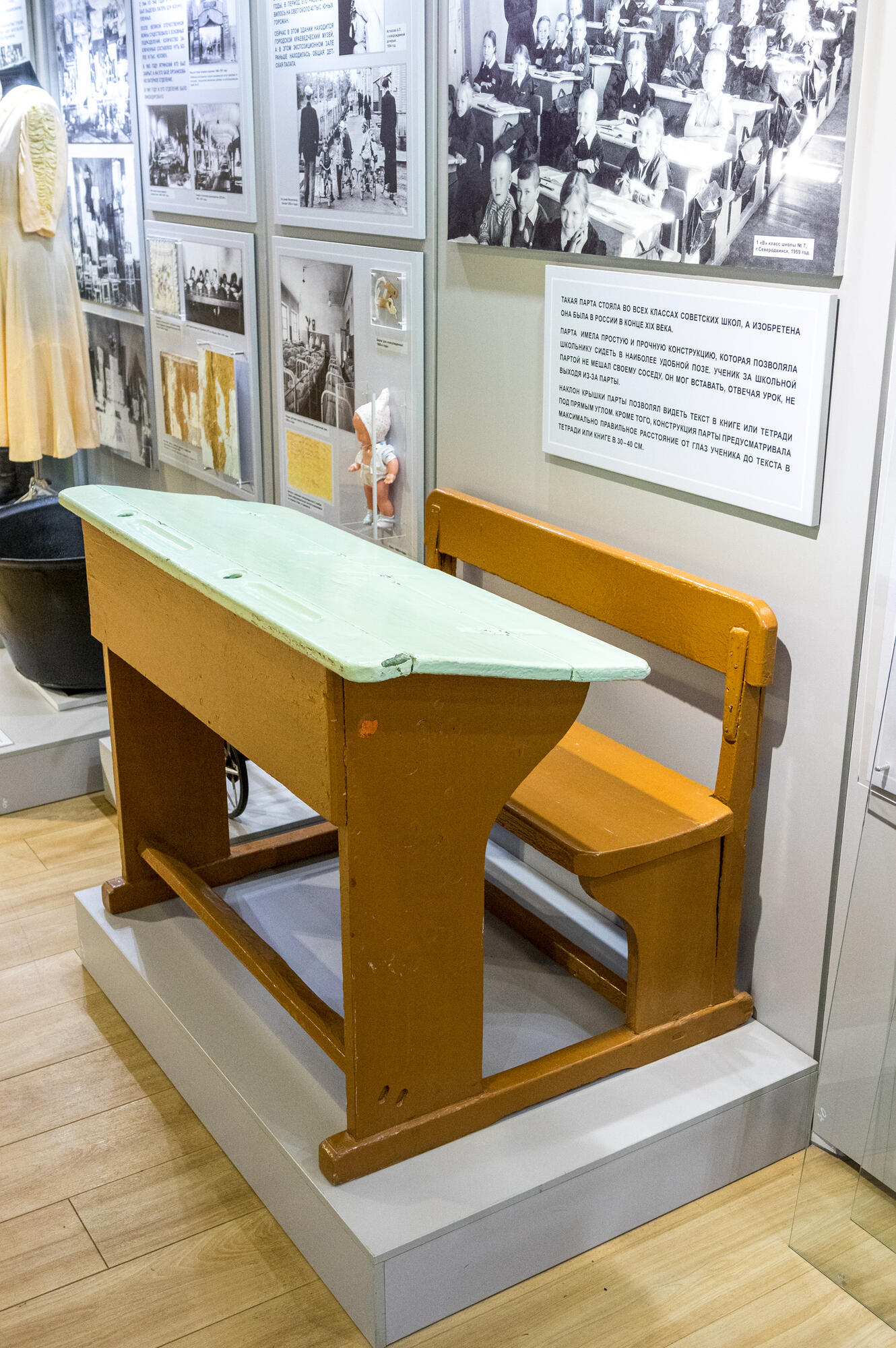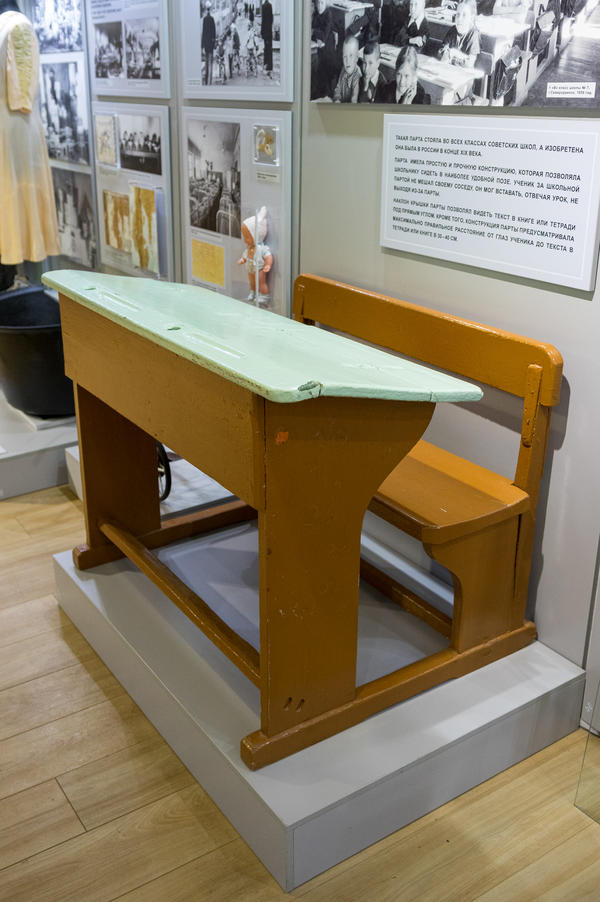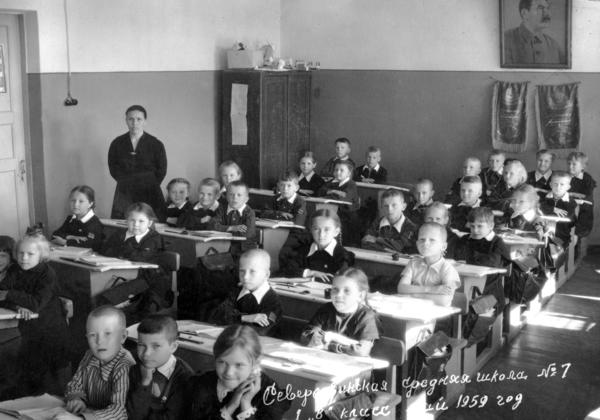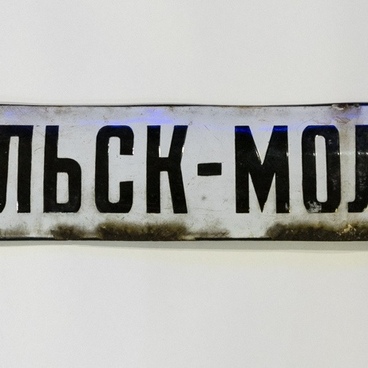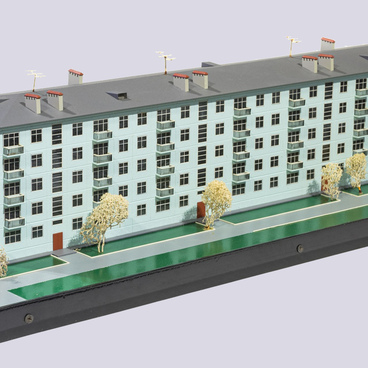The school desk was invented in Russia at the end of the 19th century; a study table like this was in all classes of Soviet schools. The desk had a simple and durable design that allowed the student to sit in the most comfortable position, as well as answer from a place without leaving the desk, not interfere with a neighbor’s writing in a notebook, and put the necessary textbooks on the shelf. When the teacher entered the classroom, the children stood up together, and the lids of the desks were thrown back with a characteristic strong knock.
The inclination of the top allowed the student to see the text in the book or notebook at a right angle. In addition, the design provided for the correct distance from the eyes to the text in a notebook or book of 30-40 cm. Closer to the edge of the tabletop, you can see two through holes — they are intended for a non-spill inkwell. In the days before ballpoint pens were available, at the beginning of each school day, the teacher poured ink from a large bottle into small inkwells.
Then, at school they wrote with fountain pens. First-graders first learned to “put” their hand on copybooks — special notebooks with writing assignments, then they continued their studies in notebooks in a slanting ruler, the slope of which regulated the writing of letters. Writing with a pen was not easy: you had to be able to put the pen correctly, change the pressure on the pen, draw ink and in no case make blots. Learning to write with a fountain pen contributed to the formation of beautiful and clear handwriting.
Ink blots were the eternal companions of post-war schoolchildren. Therefore, all the years while at school they wrote in ink, the tabletop was painted over in a dark color. A light-colored countertop is a sign of a later time.
Hundreds of personal stories are associated with the school desk. Old residents of Severodvinsk recall that, in the first years after the Great Patriotic War, three people could fit in crowded classrooms at one desk. A bun could be flattened by the hinged lid of the desk — so it seemed larger and could be divided into several classmates.
This desk entered the museum in the 1980s, when one of the oldest schools in the city was closed for lengthy renovations.
The inclination of the top allowed the student to see the text in the book or notebook at a right angle. In addition, the design provided for the correct distance from the eyes to the text in a notebook or book of 30-40 cm. Closer to the edge of the tabletop, you can see two through holes — they are intended for a non-spill inkwell. In the days before ballpoint pens were available, at the beginning of each school day, the teacher poured ink from a large bottle into small inkwells.
Then, at school they wrote with fountain pens. First-graders first learned to “put” their hand on copybooks — special notebooks with writing assignments, then they continued their studies in notebooks in a slanting ruler, the slope of which regulated the writing of letters. Writing with a pen was not easy: you had to be able to put the pen correctly, change the pressure on the pen, draw ink and in no case make blots. Learning to write with a fountain pen contributed to the formation of beautiful and clear handwriting.
Ink blots were the eternal companions of post-war schoolchildren. Therefore, all the years while at school they wrote in ink, the tabletop was painted over in a dark color. A light-colored countertop is a sign of a later time.
Hundreds of personal stories are associated with the school desk. Old residents of Severodvinsk recall that, in the first years after the Great Patriotic War, three people could fit in crowded classrooms at one desk. A bun could be flattened by the hinged lid of the desk — so it seemed larger and could be divided into several classmates.
This desk entered the museum in the 1980s, when one of the oldest schools in the city was closed for lengthy renovations.
